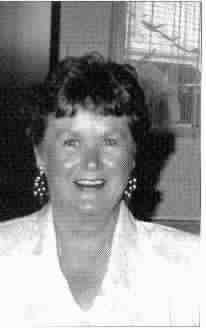|
Blencowe Families' Association Newsletter
|
Vol. 18 No. 1 March 2003 |
|
Pauline Blincoe brings back memories of yesteryear in
South Island New Zealand
 Two books came to me just a few days before Christmas, a gift from Pauline Blincoe,
whose husband Maurice descends from Francis Blincoe who sailed from England
to New Zealand on the Clifford in 1841. Pauline’s first book: Public
Works Camps, Poor Kid’s Paradise, tells the story of a work programme introduced
by the Government to alleviate hardship during the 1930s depression — rather
on the lines of the CCC programmes in USA under Roosevelt’s ‘New Deal’. She
has collected reminiscences from a score of contributors and includes more than
200 photos. She tells how her earliest memory is getting ‘shifted out’ of her
Blenheim home at the age of four. Just another jobless family leaving for one
of the hundreds of public works camps set up during the Great Depression. The
family moved to a temporary settlement on the Kaikoura coast and the men set
about completing the main trunk railway down the east coast of South Island
to Christchurch. The cabins were of wood and were dismantled and moved to another
site as work progressed.
Two books came to me just a few days before Christmas, a gift from Pauline Blincoe,
whose husband Maurice descends from Francis Blincoe who sailed from England
to New Zealand on the Clifford in 1841. Pauline’s first book: Public
Works Camps, Poor Kid’s Paradise, tells the story of a work programme introduced
by the Government to alleviate hardship during the 1930s depression — rather
on the lines of the CCC programmes in USA under Roosevelt’s ‘New Deal’. She
has collected reminiscences from a score of contributors and includes more than
200 photos. She tells how her earliest memory is getting ‘shifted out’ of her
Blenheim home at the age of four. Just another jobless family leaving for one
of the hundreds of public works camps set up during the Great Depression. The
family moved to a temporary settlement on the Kaikoura coast and the men set
about completing the main trunk railway down the east coast of South Island
to Christchurch. The cabins were of wood and were dismantled and moved to another
site as work progressed.
Pauline’s own story is of the
happiest memories of the experience,
the location was spectacularly beautiful
and the houses:
‘lovely warm stove, cups of cocoa, sitting with our feet in
the oven; big old radio sitting on a bench with a car battery on the floor for
power; kerosene lamps on the wall with a shell shaped reflector; stoves shined
weekly with Zebo. Toilet at the back of the house down a long path.
Three little
girls in a big warm double bed with a fluffy counterpane. Big gold knobs on
the ends of the bedsteads … Happy weekends bird-nesting, picking berries for
jam, being taught songs and dances by Maori ladies …
So the tales unfold, a remarkable local history, a delight for grandchildren
and their children yet to come. The second book ‘Yesterdays of Golden Bay’,
also copiously illustrated, is a collection of personal stories of pioneering
days in the northernmost tip of the South Island. Many of the early industries
have disappeared, but the scenic beauty of the area is developing its tourist
potential.
updated: 7 February 2009
 Two books came to me just a few days before Christmas, a gift from Pauline Blincoe,
whose husband Maurice descends from Francis Blincoe who sailed from England
to New Zealand on the Clifford in 1841. Pauline’s first book: Public
Works Camps, Poor Kid’s Paradise, tells the story of a work programme introduced
by the Government to alleviate hardship during the 1930s depression — rather
on the lines of the CCC programmes in USA under Roosevelt’s ‘New Deal’. She
has collected reminiscences from a score of contributors and includes more than
200 photos. She tells how her earliest memory is getting ‘shifted out’ of her
Blenheim home at the age of four. Just another jobless family leaving for one
of the hundreds of public works camps set up during the Great Depression. The
family moved to a temporary settlement on the Kaikoura coast and the men set
about completing the main trunk railway down the east coast of South Island
to Christchurch. The cabins were of wood and were dismantled and moved to another
site as work progressed.
Two books came to me just a few days before Christmas, a gift from Pauline Blincoe,
whose husband Maurice descends from Francis Blincoe who sailed from England
to New Zealand on the Clifford in 1841. Pauline’s first book: Public
Works Camps, Poor Kid’s Paradise, tells the story of a work programme introduced
by the Government to alleviate hardship during the 1930s depression — rather
on the lines of the CCC programmes in USA under Roosevelt’s ‘New Deal’. She
has collected reminiscences from a score of contributors and includes more than
200 photos. She tells how her earliest memory is getting ‘shifted out’ of her
Blenheim home at the age of four. Just another jobless family leaving for one
of the hundreds of public works camps set up during the Great Depression. The
family moved to a temporary settlement on the Kaikoura coast and the men set
about completing the main trunk railway down the east coast of South Island
to Christchurch. The cabins were of wood and were dismantled and moved to another
site as work progressed.